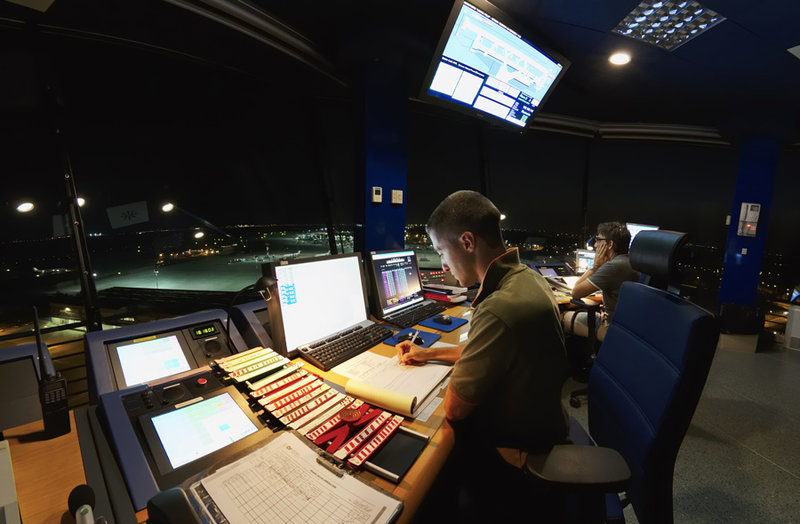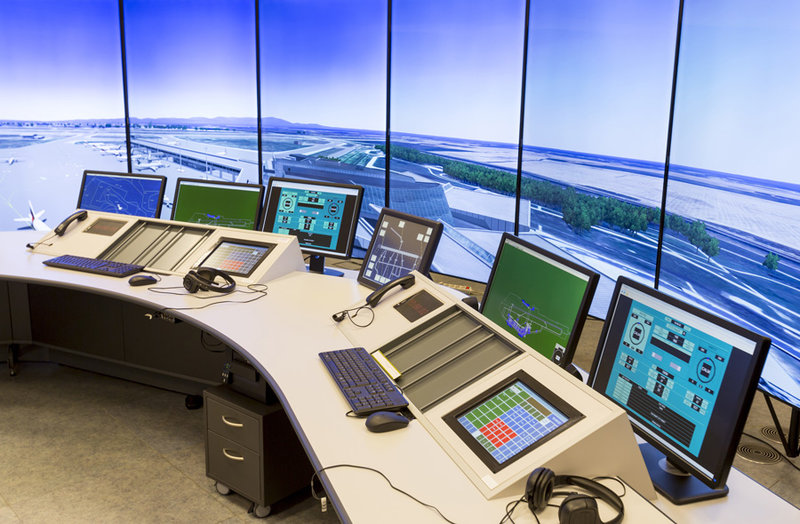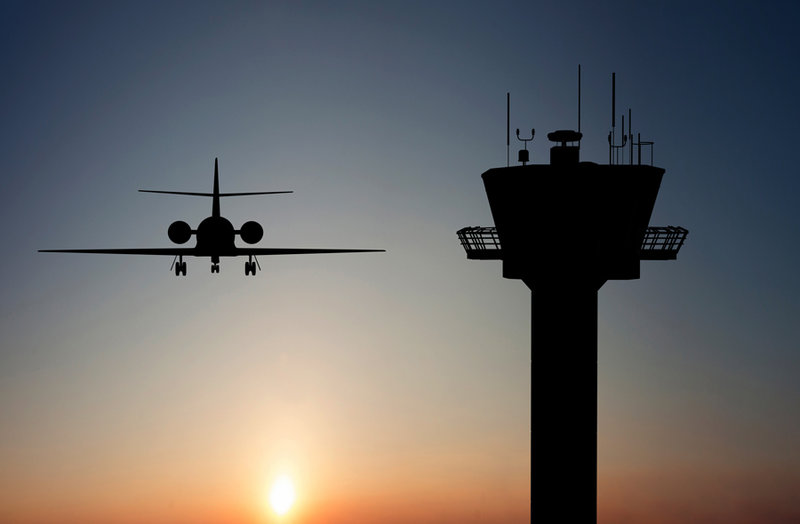Air Traffic Control
Acknowledging the human factor in air traffic control
The
future
of US air
traffic control:
the third option?
Recent events in the US have shone a spotlight on human factor issues in air traffic control. What procedures are in place to manage a controller who has become incapacitated, and how can air traffic control service providers ensure that their controllers can handle new sources of stress as technology develops? Joe Baker investigates
The ‘human factor’ in air traffic control has been the subject of widening discussion as air navigation service providers (ANSPs) increasingly push the boundaries of technology and automation. Recent incidents in the US have reawakened a conversation about the burden placed on ATC operators, and the factors impacting their performance.
In November 2018, an air traffic controller at McCarran Airport, US, was heard slurring her words and giving unclear instructions as pilots continually asked her to repeat herself. Following this, the FAA made a statement saying it was investigating the causes of the incident, and that the controller was no longer employed at the airport.
At the time of writing, air traffic controllers have been working almost a month without pay as a result the US Government shutdown. Temporary layoffs have led to some airports being thin on the ground leading to overtime and cognitive overload for controllers essentially working for free.
"It's a very high-stress job and you need to be on your game at all times," Mick Devine of the National Air Traffic Controllers Association (NATCA) told NPR. "There is a concern that as this goes on, the human factors aspect of this shutdown will take a toll on the psyche and concentration level of our members."
With various countries around the world impacted by shortages in air traffic controllers and demand for air services ever increasing, analysing the human factor in air traffic control is seemingly more important than ever.
Image courtesy of
Putting procedures in place for emergencies
Following the Las Vegas incident, the FAA introduced a new policy requiring two controllers to be in air traffic control tower at all times for the first 90 minutes. A NATCA statement provided to AIR in December said it was ‘important to remember the outstanding work that is done every day by the thousands of men and women who keep the National Airspace System safe.
“We are proud of our safety record both in Las Vegas and at every facility and will continue to work to keep our airspace system the world's safest,” said the NATCA statement.

Image: Angelo Giampiccolo / Shutterstock.com
NATS Head of Human Factors Neil May is tasked with minimising the impact of human error and enhancing safety in air traffic control operation. He says that for UK controllers, training is provided on an annual basis for unusual circumstances and emergencies, so they are well practiced in taking over from another controller in an emergency situation should the need arise.
“Controllers work in teams and are continually communicating with each other,” he says. “If the behaviour of a controller was unusual, this would be spotted immediately by one of their colleagues who would raise concerns with the individual, the supervisor and other team members. Assistance would be provided to the incapacitated controller and a team member would immediately take over the role of that controller ensuring a safe operation.”
Eero Knuutila is Head of Service Development at Helsinki Airport.
Image courtesy: Helsinki Airport
Controllers work in teams and are continually communicating with each other
Causes of stress in ATC
Pursuing the human factor consists of decreasing the potential of ATC error while enhancing safety. A major aspect of this is analysing sources of stress and streamlining ATC procedures to lessen potential impacts on human performance. According to SKYbrary, the most common sources of stress in ATC are related to the operational aspect, such as peaks of traffic load, time deficit and limitations in equipment, and organisational aspects, such as shift management and conflicting roles.
Stefano Bonelli is a human factors expert working at Italian consultancy Deep Blue. He says that much of the stress placed upon air traffic controllers is dependent on the organisation or culture they work in.

“What is stressful for Italians maybe is not stressful if you go to Germany because the context is different, the training is different and so on,” he says. “There are some events that are stressful for all, but you have specific situations generating stress.”
The role of air traffic controllers is set to change in the future due to the use of highly automated systems. For example, the FAA’s NextGen development programme has been striving to create a future in which air traffic controllers will work with new automation tools, such as the Standard Terminal Automation Replacement System, En Route Automation Modernization, and Data Comm.
“You are changing the role from an active role to a monitoring role,” says Bonelli. “This means that there will be different situations leading to stress.”
Much of the stress placed upon air traffic controllers is dependent on the organisation or culture they work in
Analysing the impact of new technologies on performance
Funded by the Single European Sky ATM Research project, the recently concluded STRESS project was carried out to examine impact of new technologies on controller performance. The project was carried out by a number of European partners and co-ordinated by Deep Blue.
Concluded in 2018, the project had a number of outcomes, including ‘guidelines for the design of innovative technologies that are compatible with human capabilities and limitations.’ However, arguably the most important development of the project is a neurophysiological measurement toolbox, which can assess the impact of future ATC scenarios on controllers.
STRESS identified a number of relevant human factors, including attention, mental workload and types of cognitive control on tasks. Using a number of air traffic controllers as test subjects, it collected data that was used to develop specific neurophysiological indicators (i.e. brain activity) for each of these factors. The next step of the project was to then measure neurophysiological signals given off by controllers while they participated in a simulated future ATC scenario.
Bonelli says that there are many of the ways of estimating the impact of a new tool on stress, but that these don’t always hit the mark. Questionnaires provided to controllers may be too subjective, whereas measuring the level of cortisol in the blood – another stress indicator - is too invasive.

Bonelli adds that if it were distilled into a more practical device, the STRESS technology could be used by ANSPs during demonstrations of new automation procedures. Controllers would be able to objectively show their employers whether new tools/procedures were in fact increasing their workload beyond a reasonable limit.
“We spoke with a lot of controllers and they would like to have these kinds of tools because now organisations don't trust them,” Bonelli says.
Bonelli says that feedback had generally been good for the project so far. One ‘extreme’ worry was that the tool could be used by ANSPs to determine whether or not an employee was too overwhelmed to carry on in their position. However overall, controllers saw it as a good tool for proving their point.
Next steps for the project will involve increasing the scope of the technology to measure not only stress and attention, but other factors such as fatigue and situational awareness.
Eero Knuutila is Head of Service Development at Helsinki Airport.
Image courtesy: Helsinki Airport
Many of the ways of estimating the impact of a new tool on stress don’t always hit the mark